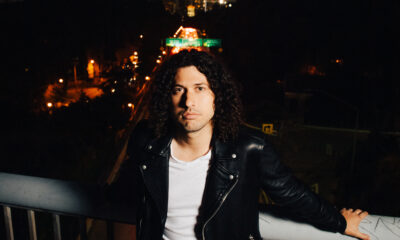Equality
A Barista’s Inside Scoop: Starbucks Racial Bias Training
Thoughts from a Starbucks Barista
*These are my personal opinions, and should not be perceived to be any official affiliations towards Starbucks Corporation in my writing*
On Tuesday, May 29th my Starbucks, and 13,930 others across the United States closed at 2:30 to the public for its previously announced Racial Bias training, in response to an incident that happened in April.
Two men visited a Starbucks in downtown Philadelphia, for a business meeting. First, they were refused a request to use the bathroom before they’d ordered, and then an employee called the cops on the men, who were black. Police arrested them on scene, which caused a series of boycotts to Starbucks before the could issue a public apology.
Days up to the event, there was widespread coverage on this event causing customers to snicker and complain about us closing early, and every person who knew I worked at Starbucks asked me, what the training would be about.
Honestly, like everyone else, I had no idea what to expect. In this day and age where racial tensions are increasingly getting worse and worse, I said the same thing to nearly everyone who asked me.
I don’t know, but why does it matter? There’s no harm in trying to make people aware of the daily unconscious discrimination around them.
Overall, my view on Starbucks is very positive. I have a love and passion for what I do, and most of the time I try and defend my company as much as possible. However, when I heard about the unacceptable incident in Philadelphia, I was ashamed. Starbucks is known for making moments right, and being all inclusive. This went against everything this company stood for.
My store as a whole is very diverse group of people and we serve a wide range of customers- especially since we are down the street from a major airport, so for us to have this training was reinforcing what our store has already believed in.
We split into groups of three, watching videos on a TV hooked up to an iPad, and then discussed what we watched within our group, and our journal. These videos were featuring the rapper Common, documentary filmmaker Stanley Nelson, Starbucks executives including former CEO Howard Schultz.
Something pushed heavily within the curriculum was Starbucks being a “Third Place,” which Schultz uses to describe his belief that Starbucks could offer a place of refuge between home and work. Many discussions stemmed between that statement at our store, about what our ‘Third Place’ is. Many even agreed, Starbucks indeed was their ‘Third Place’ because of the welcoming environment we bring.
Discrimination is a real threat to that standard, and I completely understand that and am glad that was touched upon. If you can’t find comfort at home, having a place to be able to feel comfortable is extremely important. I wish to make my workplace that space not just for our baristas, but for everyone who walks through our doors.
Questions like when you first noticed your own racial identities, or when had they felt their accents affected how other people perceived their intelligence were prevalent in the notebook we received. As a white female- personally I have never dealt with that situation before, but seeing the number of people who have within our groups was alarming to me.
Personally, I can’t think of a time at Starbucks where I was intentionally biased towards someone due to their race and at our store, that was true for near all of us. One issue personally which stuck with me was customers attack on our baristas, racially within our own store. That was heartbreaking to hear and typically we don’t think much of rude customers, since everyone has bad days- but being aware that it has occurred within our store, brought great discussion on what we could do to combat racial bias at our store.
Obviously, I’m not perfect and I have my share of bias, but I try to be as ethical as possible within my biases, and tend to be very conscious of it. I grew up in two different Urban cities, I was brought up that way within my parents and mentors.
Particularly I really enjoyed the documentary by Stanley Nelson. It touched on not only history as a whole, and how our country was segregated, but it featured people of color, discussing the bias they faced day to day. In the middle of that, there is a white male featured- and he stated that he never had fear leaving the house. In comparison towards near everyone else in the video- it struck me as eye-opening.
I believe that this four hour session was great, but not enough. The curriculum was only set for that one session, but I hope to see follow up and to make sure we are fulfilling our long-term commitment to diversity and combating racial bias.
Jumpstart a career doing something you are passionate about with one of College Media Network’s courses. Read about our current offerings, schedule and unique virtual learning environment here.











